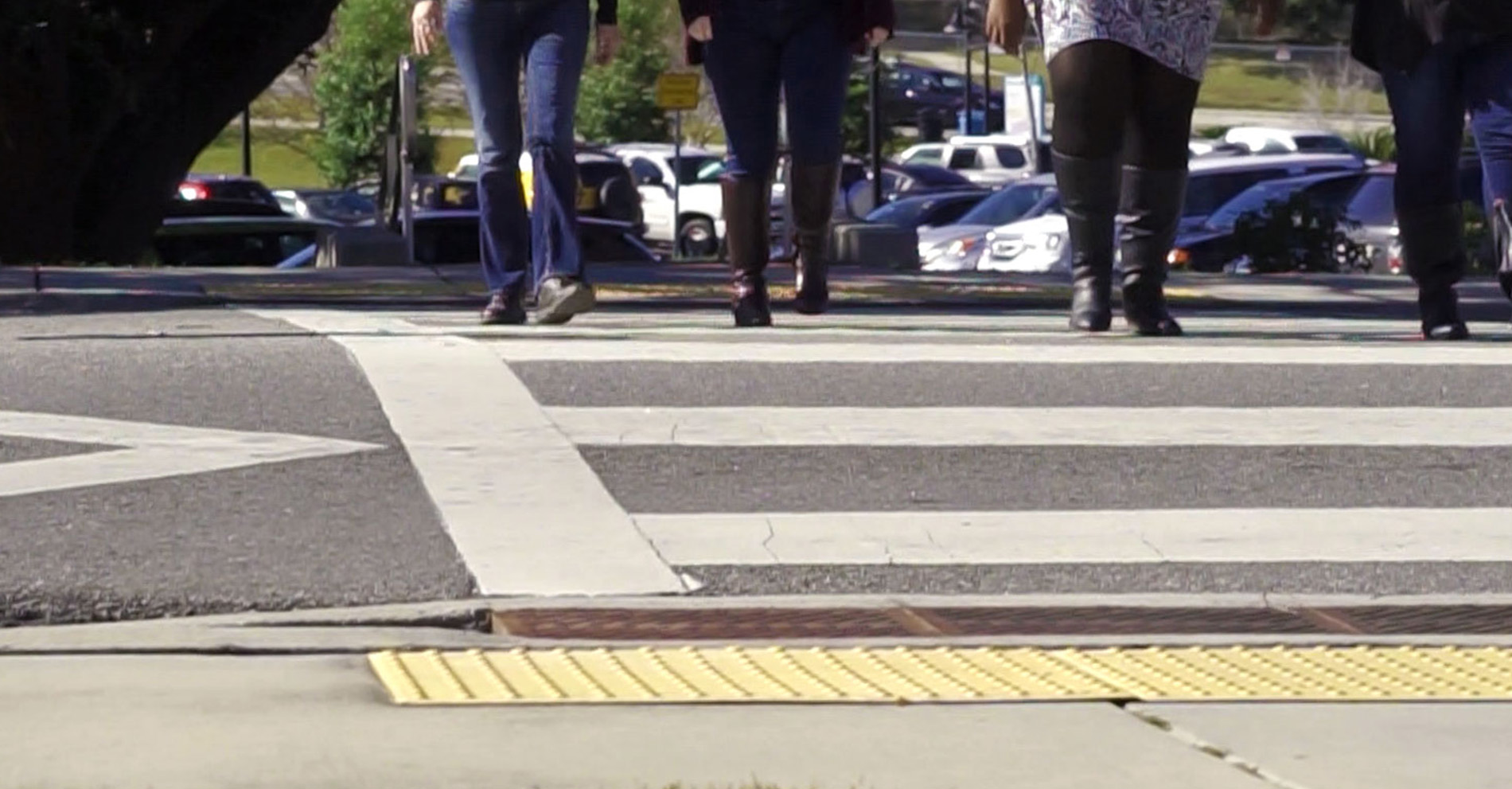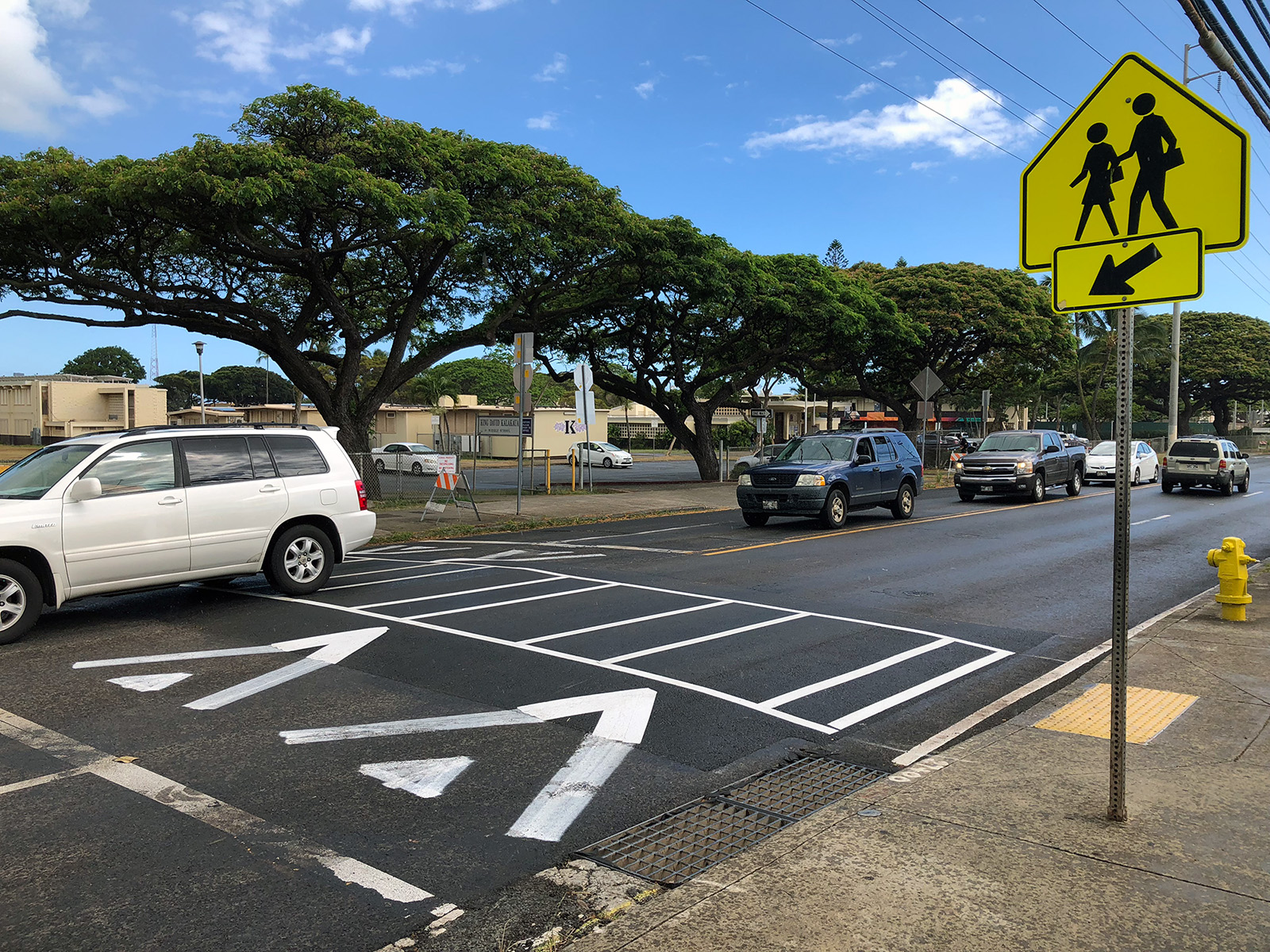
Hawaii DOT Gets Fast and Furious Installing Raised Crosswalks
The Hawaii Department of Transportation (HDOT) is working to improve safety through the installation of raised pedestrian crossings, a traffic-calming measure that allows pedestrians to cross at grade with the sidewalk.
“By the end of 2022, we will have 150 raised crosswalks on our system,” said Ed Sniffen, HDOT’s deputy director for highways. “By the end of 2023, it will be 220. We don’t have to wait for crashes to happen and people to die before we install these. We know they work, and they can prevent tragedies.”
Sniffen was onsite during some road improvements in a residential area in urban Honolulu when he noticed people driving through the four-lane corridor at nearly double the posted speed limit.
“The speed limit was 35 and people were driving 60,” Sniffen said.
The corridor included three schools totaling 3,700 students, 80 percent of whom walk to school. In addition, many elderly pedestrians walk that corridor to access transit and the open market at the nearby park.
So, what could be done to be most effective in slowing drivers?

Raised crosswalks improve the visibility of pedestrians and provide drivers a physical reminder to reduce their speeds.
Credit: Hawaii Department of Transportation“We knew our problem was speed,” Sniffen said. “So we took on speed. But we wanted to make sure the system itself did most of the work. Raised crosswalks were the best option.”
A raised crosswalk is a variation of a flat-topped speed table that is marked and signed as a pedestrian crossing. They were one of the featured countermeasures in the EDC Safe Transportation for Every Pedestrian (STEP) initiative.
The most common type of raised crosswalk is constructed flush against the roadside curb and typically between 3 to 6 inches above street level. They slow vehicles and make pedestrians more visible to drivers. Raised crosswalks can reduce all pedestrian crashes by 45 percent.
Sniffen’s team started by installing six raised crosswalks along the corridor. The results were immediate.
“We have had six minor crashes since we installed those raised crosswalks in 2019,” Sniffen said. “No severe crashes. The entire driving culture of that corridor has changed.”

Hawaii DOT installed raised crosswalks on Kalihi Street in 2019, a section of roadway that had previously averaged two pedestrian-related crashes per year.
Credit: Hawaii Department of TransportationThe community in the area has also embraced the raised crosswalks.
“At first there was resistance from some drivers and others in the community,” Sniffen said. “But the overwhelming response was positive. Emergency responders told us the raised crosswalks had no effect on their response times and they actually prevent incidents the responders would have to respond to. Then we started getting requests from residents in other areas to install raised crosswalks in their communities.”
The agency is now proactively installing raised crosswalks systemically in other areas similar to their first raised crosswalk project and that have similar risks.
Another benefit of raised crosswalks is short installation time and cost-effectiveness, costing as little as $4,000 to $8,000, according to FHWA.
“We can have these on the ground in 2 days or less,” Sniffen said. “In fact, we have a contractor on standby who has a dedicated crew just to install these for us.”
Learn how raised crosswalks can reduce crash risk for pedestrians.
Credit: FHWA“This is a great example of being proactive,” said Becky Crowe, transportation specialist with the FHWA Office of Safety. “HDOT stepped up to the challenge of eliminating fatal and serious injury crashes. They identified speed as a major risk and then quickly installed raised crosswalks.”
“Our job is to make a safe system for everyone to travel,” Sniffen said. “At the DOT, our part is infrastructure. We just want to do our part.”
—MORE INFORMATION
Visit the FHWA STEP Resources webpage for links to guidance, tech sheets, and case studies on raised crosswalks and other pedestrian safety countermeasures.
Read the FHWA STEP program’s Guide for Improving Pedestrian Safety at Uncontrolled Crossing Locations for assistance in selecting appropriate countermeasures.
Learn more about the Safe System approach and principles.
Contact Becky Crowe or Guan Xu of the FHWA Office of Safety or Peter Eun of the FHWA Resource Center for information and technical assistance.
Notice: The U.S. Government does not endorse products or manufacturers. Trademarks or manufacturers’ names appear in this article only because they are considered essential to the objective of the document.
Recommended Citation: U.S. Department of Transportation, Federal Highway Administration - Washington, DC (2022) Innovator Newsletter, November/December 2022, Volume 16 (93). https://doi.org/10.21949/1521886
- Cover
- ConnectU2Jobs Graduate Shares Program Experience to Inspire Others
- Hawaii DOT Gets Fast and Furious Installing Raised Crosswalks
- States Report Success with Highly Modified Asphalt
- Innovations Help States Deliver Award-Winning Projects
- States Innovate
- Crash Responder Safety Week
- About Innovator



